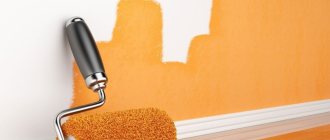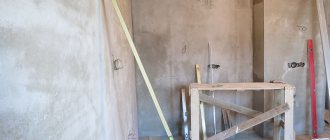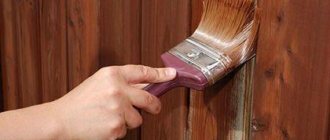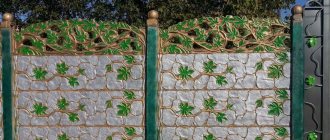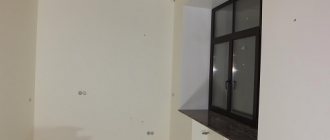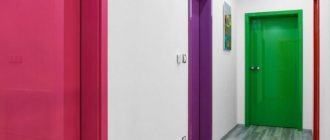While working, the plasterer may encounter the fact that the mortar does not hold, peels off or slides. To avoid this, reinforcement is used. As a reinforcing material, meshes made of different materials are usually used. Let's figure out exactly how to work with it when plastering. This article describes in detail how to correctly apply reinforcing mesh to ensure that the mortar adheres firmly to the wall surface. The material also provides useful recommendations from experts.
Grid functions
Reinforcement is necessary to increase the adhesion strength of the solution to the base.
When treating walls made of brick, wood, or monoblocks, the plaster may not lie firmly and begin to crumble over time. This is due to insufficient thickness of the plaster coating, low degree of adhesion of the base and other reasons. The problem can be solved by using metal, plastic or fiberglass reinforcement.
Reinforcement of the plaster will ensure reliable adhesion of the mortar to the wall material
Briefly about the main thing
The reinforcing mesh strengthens the plaster coating, prolongs its durability, and prevents the appearance of cracks.
The canvases are made of metal, basalt, fiberglass and polymers with cells of different shapes and sizes.
The purpose is determined by the strength of the reinforcing materials, their composition, and the parameters of the holes.
Installation is carried out using plaster mortar, hardware or using dowels.
Read later
We will send the material by email
Advantages of mesh plaster
To renovate old and new homes, experts are increasingly choosing leveling with reinforcement.
The use of reinforcing structures provides a number of advantages:
- monolithic screed;
- high degree of adhesion to the base;
- uniform load distribution;
- protection against shrinkage cracking;
- increasing service life.
The use of reinforcing materials is recommended in case of repair of new buildings and facades prone to deformation.
Installation of plaster mesh
Metal mesh should be used to cover concrete walls that have strong unevenness and protruding areas, areas where they meet wooden and metal surfaces, as well as surfaces that require a large thickness of plaster coating.
The use of plaster mesh provides the structural rigidity necessary in these cases. This mesh is made from round wire rod or woven from wire.
Types of grids
Modern building materials are diverse. This rule also applies to reinforcement. It is made of metal, plastic, fiberglass.
Fiberglass
Fiberglass mesh is a fabric with small cells. It can withstand increased loads, is resistant to corrosion and chemicals. Fiberglass is used with any type of plasters.
Fiberglass meshes are far superior to plastic ones in their performance indicators.
Meshes are widely used for interior repairs. They are suitable for leveling in rooms with high humidity.
Experts recommend attaching fiberglass to flat walls.
Polymer
Polymer meshes are becoming more and more popular every year. Plastic is used to make them. It is universal in use. Suitable for indoor and outdoor work.
Polymer materials are lightweight and do not require complex fastening. A solution or liquid nails are enough to hold it in place. The advantages are environmental friendliness and low cost. Among the disadvantages is low strength. They are not reinforced with plastic if the layer is more than 6 millimeters.
For the production of plastic mesh, modern polymers are used, which are highly durable.
Metal
Metal mesh has become widespread in the decoration of facades of residential and industrial buildings. Galvanized wire is used for their manufacture:
- Woven fabric. It is produced in the form of a fabric made of thin wire. The standard cell size does not exceed 1 centimeter.
- Wicker (chain-link). It is obtained by weaving metal rods of greater thickness. The standard link size is 2 centimeters. It is widely used for finishing large areas.
- Welded fabric. Produced by spot welding steel rods. Supplied by cards. Requires large amounts of solution .
- Expanded metal. It is made by fragmentary cutting of sheet metal and its subsequent stretching. Suitable for strengthening thin layers of plaster.
The main advantage of metal mesh is its high reliability, the ability to correct large differences in the base, and resistance to the aggressive effects of the solution.
Woven metal mesh
Rabitz
Welded mesh fabric
Expanded mesh
Basalt
Basalt mesh has become widespread in the reinforcement of buildings made of foam blocks. Benefits include:
- low thermal conductivity;
- resistance to mechanical stress and chemicals;
- light weight;
- durability;
- environmental friendliness.
Basalt is not inferior in strength characteristics to metal reinforcement, but it is more durable and better resists corrosion.
Basalt mesh is more durable than metal mesh, because it is not subject to corrosion
Tasks of metal plaster mesh
Choose construction reinforcement mesh in. Our store offers for sale a large assortment of rolled metal for this purpose. Take advantage of the opportunity to buy material inexpensively, with delivery. And order the preferred type of product that matches the type of work, including wicker, woven, TsPVS, twisted mesh for screed and plaster.
The relevance of rolled metal for reinforcement does not decrease in construction, despite the widespread use of modern “lightweight” alternatives. When arranging concrete surfaces, laying walls, and other structures, including low-rise, architectural forms, only metal gratings can be used. They provide the object with the necessary strength and resistance to premature destruction.
Selection rules
The choice of reinforcing material depends on the type of work. To determine the appropriate type, a number of points are taken into account:
- Thickness of the finishing layer. Up to 3 centimeters, plastic or fiberglass is suitable; if the thickness is greater, only metal.
- Purpose of the premises. In places with high humidity, it is recommended to use only galvanized steel gratings.
- Type of plaster. If the solution is gypsum, then preference is given to plastic.
- Purpose. Serpyanka is used to reinforce joints and cracks. For finishing stoves and fireplaces - fiberglass or chain-link.
The choice also depends on the size of the cells and the thickness of the mesh itself.
The choice of reinforcing mesh depends on the application, layer thickness and type of wall material
For interior work
For indoor renovations, specialists use 2 types of materials:
- Polymers. Used for reinforcement under gypsum mortars. They do not crack and hold securely.
- Fiberglass. Used for finishing surfaces made of brick and concrete. Suitable for cement mixtures. Less prone to shrinkage.
Polymer mesh for gypsum solutions
Fiberglass mesh for brick walls
The use of cellular fabric increases the strength and extends the service life of the coating.
For external work
For outdoor work, metal reinforcement is more suitable.
The mesh is selected depending on the type of plaster, façade area, layer thickness, and operating conditions. Metal is used in the following cases:
- large area;
- bases made of aerated concrete, wood, brick;
- high humidity;
- temperature changes;
- use of cement mortar.
The material chosen is chain link, expanded metal or seamless. With sufficient layer thickness - welded type.
Reinforced metal mesh suitable for external work
Advice from the experts
When using reinforcement techniques, master plasterers recommend paying attention to the following points:
- Carefully level the surface. The better the wall is leveled, the better the plaster composition will lie on it. If necessary, use thread, plumb lines and spirit levels for leveling.
- Taking into account the specifics of the material. Plaster has a different composition; an aggressive solution can dissolve the reinforcing material. For a structure to be strong, it must be chemically resistant.
- Planned loads. There is a big difference between the interior of a “seasoned” house and the facade of a building that may still experience shrinkage. If large deformation is planned, it is better to use a metal mesh - it is the most reliable and can withstand maximum loads per square meter of wall.
- Any plaster requires additional processing - sanding, sanding, painting, etc. This must be taken into account both when plastering walls and during final finishing.
Reinforcing mesh is the choice of craftsmen, an important part of “European-quality renovation” . Only it can provide durable, reliable wall finishing. But working with it requires accuracy and additional skills.
DIY mesh installation
Reinforced fabric is supplied to the market in reels. It is measured in linear meters. The fastening process has its own characteristics depending on the material.
Fiberglass
Fiberglass reinforcement is characterized by high strength and low weight. It does not require serious fasteners. Do-it-yourself installation of meshes begins with marking and cutting to the required size. The piece is attached around the perimeter. The central part is not fixed. It is held in place by a layer of solution .
When cutting, the piece is measured so that it covers the maximum area of the wall. It is not recommended to make multiple cuts. This negatively affects the strength of the plaster.
Fiberglass mesh is attached to the surface using a solution
Polymer
Polymers are not very heavy. They are suitable for applying a thin layer of plaster. They are mounted horizontally, from the ceiling. The overlap is no more than 15 centimeters. Fastening elements are located around the perimeter. The rest is securely held in place by a thin layer of plaster.
Metal
To attach metal reinforcement, dowels, self-tapping screws, metal mounting tape, and metal scissors are required. Progress:
| 1. The working surface is measured by determining its area. The required piece is cut from the roll. | |
| 2. The resulting canvas is degreased with solvent or gasoline. | |
| 3. Installation of the canvas starts from the top. The material is secured along its entire length with self-tapping screws and dowels. Under the hats use a lining - mounting tape or wide washers. | |
| 4. After the perimeter, the entire area is secured. The pitch depends on the thickness of the weave, but does not exceed 50 centimeters. | |
| 5. If the wall is large and one piece is missing, then the mesh is joined with an overlap of 10 centimeters. |
If the reinforcement is done correctly, then the canvas does not vibrate at points where fasteners are missing.
If installed incorrectly, voids may form, which will lead to peeling.
Advantages of metal plaster mesh
Even in work on plastering surfaces, the relevance of metal products has not decreased at the present time. There is no alternative to it if a rough or decorative coating is being laid:
- thickness from 50 mm;
- on a base with pronounced relief;
- on the surface with the implementation of reconstruction work.
The use of mesh to reinforce the plaster layer provides several effects at once. It stabilizes the mortar layer and serves as its fixing frame, thereby imparting mechanical strength. As the layer dries, it does not allow it to shrink and distributes the volume evenly. This eliminates the occurrence of cracks when the mixture hardens.
In addition, metal mesh for plastering walls extends the time between repairs. Its price is incomparable with the cost of repairs, and repairs are required much less frequently, since the surfaces wear out with less intensity.
Preparing the wall for plaster and installing beacons
The preparatory stage occupies an important place in any repair work. The labor intensity of the finishing and the reliability of the adhesion of the material directly depend on the quality of its execution.
Preparation includes:
- stripping of old coating;
- removal of dust and dirt;
- alignment of chips, cracks and other defects;
- soil treatment.
Surface preparation includes cleaning, dust removal and priming
After all work has been completed, the reinforcing mesh is installed.
If the surface is uneven, experts recommend installing beacons. They facilitate the process of leveling the plaster.
Installation of metal profiles is carried out according to a certain scheme:
| 1. Determine the point with the smallest and largest deviation. | |
| 2. The outermost beacon is installed at the maximum height. Its position is checked with a level. Mortar patches are used for fastening. | |
| 3. Another profile is installed at the other end of the wall. A thread is pulled between them. | |
| 4. Mount the remaining guides. The thread allows you to maintain the correct position. The installation step is chosen to be smaller than the rule size. | |
| 5. The fastening straps are primed and left to dry for 12-24 hours. |
When all work is completed, proceed to plastering the surface.
Plastering the facade using a polymer mesh
Polymer reinforcement has a very valuable quality: it successfully resists deformation of the plaster layer.
Due to its chemical properties, it cannot react with oxygen, and therefore rust does not form.
The plastering work procedure is similar to the previous version. But there are also some features:
- Fastening is often carried out by pressing staples or nails into the plaster layer. For fixation, you can use a construction stapler if the wall material allows.
- The plastering process should begin not from the bottom, but from the middle of the polymer mesh. Then the plaster layer is distributed in each direction, gradually approaching the edges. The movements are performed in the same way as when gluing wallpaper, when the air is expelled from under it.
- It is necessary to carefully ensure that the mesh does not stretch during the finishing work. The polymer material is elastic, so you need to be careful when working so that it does not form bubbles.
Plaster technology
Plastering the walls on a grid is carried out in 2-3 layers. All work is performed with drying intervals:
| 1.First layer. It is thrown between the beacons without much alignment. The mixture is applied with sharp movements, slightly leveling with a spatula. Leave to dry and then cover with primer. | |
| 2. Second layer. Repeated plastering is carried out with a denser solution. The layer is applied from bottom to top. The material is thrown onto the wall and leveled according to the beacons. | |
| 3. The guides are removed after the 2nd layer has completely dried. The remaining grooves are sealed with the mixture. | |
| 4. Third layer. The plastering of the walls is completed by grouting with a liquid compound. It is applied in a circular motion with a trowel or trowel. |
Finishing allows you to get a smooth and reliable surface.
Features of finishing with gypsum plaster
Gypsum plaster is often used for interior finishing.
It is distinguished by its natural composition, lack of odor, and environmental friendliness. The advantages of the mixture include:
- light weight;
- no shrinkage;
- moisture resistance;
- plastic.
The material is easy to apply and is suitable for finishing rooms with high humidity. Disadvantages include high cost and drying speed.
Finishing with gypsum composition is carried out in compliance with the following technology:
| 1. The walls are thoroughly cleaned, removing the old coating. The surface is dried and primed. | |
| 2. A reinforcing mesh is fixed to the base. For fastening, liquid nails, glue or dowels are used. The type of fastening is chosen depending on the thickness of the wall. | |
| 3. The powder solution is applied according to the instructions. It is important to get a mass without lumps. Gypsum sets quickly, so the volumes of the mixture are small. | |
| 4. The surface is covered in small areas. For leveling, use a large spatula and a rule. | |
| 5. Sagging and small irregularities are removed until the plaster is completely dry. Quality is checked using a level, beacons or a tightly stretched thread. | |
| 6. Finish grouting is carried out after complete drying. |
You can plaster using beacons (layer thickness exceeds 3-4 millimeters) or without them (maximum thickness 2-3 millimeters).
For finishing on gypsum plaster, it is better to purchase thick vinyl wallpaper. For thin ones, additional putty and sanding are required.
Features of facade finishing
The finishing of the facade is carried out in compliance with all stages and does not differ from internal work:
| 1. The mesh is cut into pieces equal to the height from the foundation to the roof. | |
| 2. The reinforcement is secured to the primed base with self-tapping screws or plastic nails. The overlap between the canvases is 10 centimeters. | |
| 3. Beacons are installed on the walls. They contribute to better leveling of the mixture. | |
| 4. The first step is a cape. It is done with sharp movements from bottom to top. The starting coating does not require serious leveling. | |
| 5. After the cape has dried, apply a second coat. The plaster is applied with a trowel and carefully leveled using the rule. | |
| 6. After drying, the rules remove the beacons. The grooves are filled with plaster. | |
| 7. To obtain a smooth surface, make a third layer - rubbing. A liquid composition is used for it. |
Finishing wall putty or cladding with finishing material allows you to obtain a decorative, smooth surface.
Plastering the surface
At the final stage, the facade is finished with plaster using a grid; the technology involves applying the plaster mixture in 2-3 stages.
At the first stage, the surface is plastered in 2-3 layers with a composition suitable for the wall material. The initial coating is applied by spraying. The solution for throwing on the wall should have a creamy consistency. The applied composition is leveled with a wide spatula. The thickness of the layer when sprayed according to standards is up to 10 mm.
After the previous coating has dried, a thicker plaster is mixed - with the consistency of dough. The dense mass is applied to the surface with a trowel and carefully leveled with a rule that is pressed against the beacons and pulled across the surface. This layer should cover the reinforced mesh. After the solution has hardened, the profiles are removed and the grooves are sealed with thick plaster.
Finally, the dried surface is leveled. A liquid plaster solution is prepared, which is applied to the panel and rubbed using a trowel.
The technology is suitable for different surfaces (wood, concrete, brick) and various reinforcing materials.
Possible mistakes
Novice craftsmen often encounter mistakes that can lead to peeling of the solution and reduced surface quality:
- No primer. The primer increases the adhesion of the material. It must be used to ensure that the mortar adheres securely to the wall.
- Violation of proportions. Lack of water leads to increased density. Such plaster slides under its own weight and cracks.
- Adjustment of consistency with powder. The consistency of the working mixture should only be changed with water. To do this, it is administered in small portions, bringing it to the required volume.
- Refusal to reinforce joints and walls in new buildings. Joints made of different materials have different technical characteristics. They differ in behavior under changes in temperature and humidity. Therefore, cracks often appear at the joints. Reinforcement helps to avoid them.
- Incorrect position and fastening of the mesh. It is enough to secure the lightweight fabric around the perimeter. When using metal sheathing, fasteners are made over the entire area.
- Attaching beacons to a continuous layer. To install beacons, straps with a given pitch are used.
- Failure to comply with drying conditions. It is unacceptable to dry walls in direct sunlight, with a heat gun or at elevated temperatures. This leads to uneven drying of the mixture and cracking.
Drying the wall with a heat gun leads to uneven drying of the mixture and cracking
Frequent mistakes also include too thick a mixture, an excessively thick or thin application layer, and the use of low-quality materials.
Advantages and disadvantages
Today the range of plaster mesh is very diverse. Constructions made of polyurethane, plastic and fiberglass have become available for use. But the most popular are those made from metals.
This is due to many features of their technical characteristics:
- The metal mesh is particularly durable, which helps it withstand heavy loads. If leveling a large surface area requires applying a thick layer of plaster, then it is better not to save money and purchase just such a material for reinforcement.
- Its use is possible when working on any base and with different compositions of rough finishing solutions.
- The application of the plaster layer is not limited by its thickness. When working with thin or light substrates, it is possible to apply a minimum layer of up to 20 mm. If it is necessary to equalize differences in surface heights on a vertical wall, then it is permissible to apply a solution with a thickness of more than 50 mm.
- In preparation for plastering a metal base, you can weld a reinforcing mesh to it, which will ensure greater reliability of the entire structure.
- To cut out individual pieces of a free configuration from a single piece of fabric, it is sufficient to use hand tools, for example, metal cutting scissors or wire cutters.
- Fastening such reinforcement does not require much time and effort. To create a strong connection with the base, it is enough to secure the mesh in only a few places.
The main disadvantage of this type of material is its significant weight. It can be strengthened only on surfaces that can withstand the total weight of the metal mesh and finishing leveling mixtures. You should not perform reinforcement on surfaces made of plasterboard or hollow brick.
A significant disadvantage can be considered the high cost of this building material, especially those made of galvanized metal, which has additional protective properties.
Recommendations from experts
It is possible to obtain a high-quality and reliable wall only if you follow advice from experts:
- Alignment. The walls should be carefully leveled. The level is checked using a plumb line or laser. The better the work is done, the better the finishing is.
- Taking into account the characteristics of materials. Compatible materials should be selected. Aggressive solutions are capable of dissolving the reinforcing structure.
- Taking into account the maximum load and possible shrinkage of the building. In the case of new buildings and facades that are severely deformed, it is recommended to use metal reinforcement.
- Final revision. Plaster is not a finishing coat. To give it decorative properties and prepare it for subsequent finishing, it requires sanding and sanding.
Experts recommend that you sand the walls after applying plaster.
Reinforcing mesh is a necessary element for rough finishing of house facades and walls in new buildings. Its correct fastening and adherence to the technology of applying plaster allows you to create a reliable and strong coating that will last a long time.
Have you ever had to plaster walls using a grid? Share your life hacks in the comments.
Instructions for use
For each type of mesh there are several technologies for attaching to the wall. Let's look at the most common ones.
Metal fittings
Metal reinforcement can be secured using:
- self-tapping screws;
- dowel-nails;
- staples
All operations are performed in the following sequence:
- the roll is unrolled and leveled;
- cut into pieces of the required size;
- cleaned of oil - this is recommended by building regulations. In practice, I have never seen anyone wipe it;
- markings are carried out for fastening hardware - the ideal option is 30 cm from each other (optimally 16 hardware per 1 m2). For “Chain-link” you can use 50 cm;
- holes for dowels are drilled;
- fasteners are hammered or screwed into the wall, but not completely;
- a mesh is stretched over the fasteners, with an overlap of 10-15 cm;
- the fasteners are driven tightly into the wall, but so that there is a gap of 2-3 mm between the mesh and the wall;
- beacons are mounted on the solution;
- plastering work is being carried out. First, the spray is applied, then the primer, and the coating finishes.
Lightweight reinforcing materials
Fiberglass and basalt mesh can be fixed in one way - submerged in a layer of mortar and covered with the same compound on top. Wall mounting with staples and hardware is also common. But why this is done is unclear. After all, only up to 8 mm of solution can be applied on top. And for such a thickness of gypsum plaster, reinforcement is useless.
The algorithm of actions for this technology is simple:
- the wall is stitched (what it is and how it’s done can be seen here);
- markings are applied for beacons;
- the locations of the dowels are marked;
- holes for fasteners are drilled;
- dowels are driven into the resulting holes;
- Screws are screwed in under the guides - all heads must be in the same plane;
- the mesh is cut to size with a margin of 10-15 cm for overlapping installation;
- a cement-sand mortar is prepared;
- the first layer of plaster is applied - sprayed - to the area under the first sheet;
- After leveling the spray, the mesh is attached to the solution. The hardware heads are carefully passed through the reinforcement cells;
- the mesh is covered with a thin layer of new solution or rubbed over with the already applied one;
- the spray is applied to a new area, after which the mesh is again attached to the solution with an overlap;
- after attaching the reinforcement, beacons are installed along the entire wall;
- primer is applied;
- reinforcement is carried out again;
- after the soil has dried, the plaster layer is covered with a cover;
- the wall is plastered.
Important: the reinforcing mesh sunk onto the spray can be fixed not with mortar, but with construction staples.
Polymer reinforcement
Plastic mesh is attached to the solution, but using a slightly different technology:
- the mesh is cut to size;
- a base (primer) layer of plaster is applied;
- the mesh is attached and pressed into the solution;
- using a spatula, the reinforcement is leveled, from the middle to the edges;
- the reinforcement is covered with a layer of putty.
Shingles
The rubbish is applied to the wall in 2 layers. For the first, lifestyle, thin, 3 mm thick and 25-30 mm wide slats are taken, for the second, weekend, thicker and wider slats are needed. They are packed crosswise at an angle of 45o relative to the floor. The technology is described in more detail here.
Types of reinforcing materials
There are not many construction (installation) meshes used for plastering walls and ceilings. Let's start with the most common option.
Fiberglass mesh for plaster
The fiberglass plaster mesh consists of small square cells. The mesh is sold in rolls with a length of 10 to 50 m, a width of 0.5-1 m. This material is resistant to sub-zero temperatures and is treated with impregnation from the aggressive alkaline environment of the applied solutions. Widely used for indoor and outdoor applications.
Expert opinion
Sergei Shablovsky
Plasterer
Important! The material on sale varies greatly in tensile strength, regardless of density! For example, a recycled mesh with a density of 160 g/m2 can easily break after bending, while a less dense but high-quality fiberglass fabric will not break. Always test the material if you have not worked with it before. Simply fold the canvas in half and everything will become clear. Excellent tensile strength = 1700-1800 N.
Another important quality indicator is resistance to tearing after 28 days in NaON alkali. According to GOST, the tensile load should not decrease by 50%. Focus on a value of 35-40%. You need to look at this data on the packaging or ask the seller for a test certificate.
You can choose the same plaster fiberglass mesh for interior and facade work.
Current price:
fiberglass mesh for plaster reinforcement
"Spiderweb" painting
This material with a density of 45-50 g/m2 is also made from fiberglass, but without cells. Cobweb is used during puttying or as an independent coating for painting. In the second case, it is attached with glue, hides small irregularities without puttying and makes the walls perfectly smooth.
Serpyanka ribbon
Serpyanka is a skein of cellular fiberglass 45-230 mm wide on a self-adhesive base. It is used for reinforcing the joints of ceilings, floors with walls, junctions of window and door frames, as well as for gluing joints of sheet materials: plasterboard, chipboard, fiberboard, fiberboard, etc. before plastering.
Polypropylene
Polypropylene reinforcement is rarely used for plastering; PVC mesh is mainly used for pouring floor screeds, for garden fencing and other household needs. It is a very durable frame, combines low weight and flexibility, which allows you to give it any shape. In addition, plastic is durable, does not rot and does not give corrosion stains.
Metal
Let us now consider what metal mesh is used for plastering. According to the production method, they are of the following types:
Expanded metal
Woven
Rabitz
Welded
To reinforce walls under heavy (cement) plaster, we recommend choosing galvanized welded mesh, for example, 0.8 mm rod diameter; cell 12.7 x 12.7 mm. Or expanded metal with similar dimensions. This will be quite enough.

